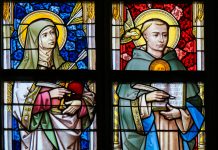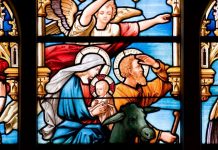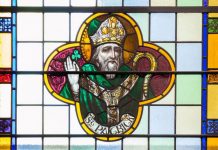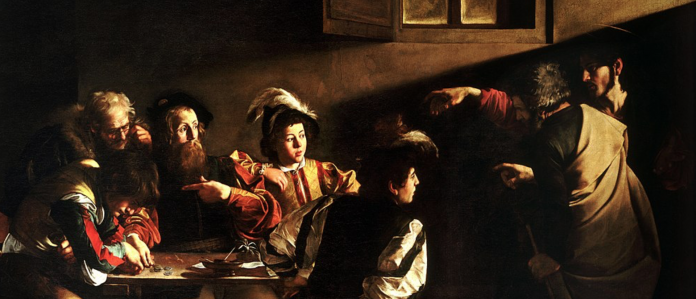
Encountering Jesus in Matthew’s Gospel
EDWARD SRI
In a small church near the Piazza Navona in Rome stands a famous painting by the Baroque artist Caravaggio. I like to take pilgrims there, not just to admire the beautiful masterpiece, but for a more important spiritual purpose: to enter the mystery of what it means to be a disciple.
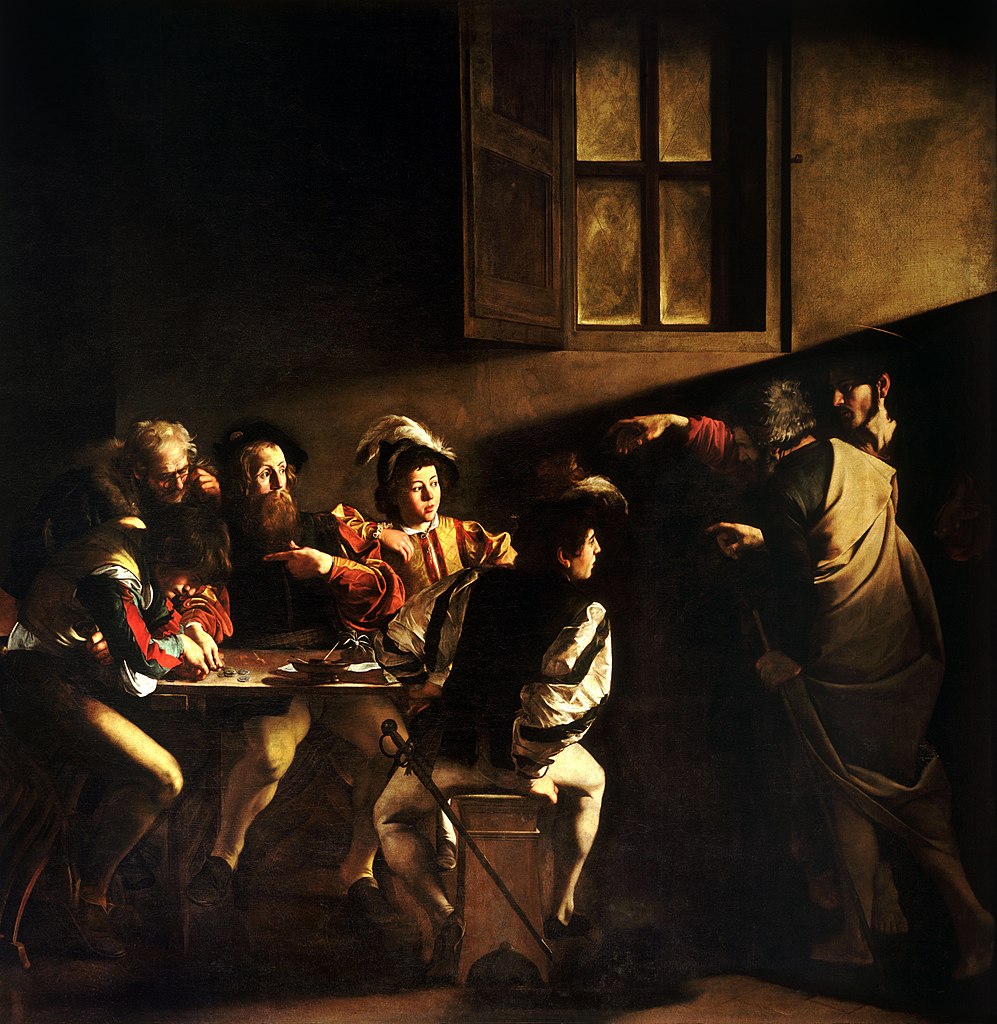
From the Contarelli Chapel, Church of San Luigi dei Francesi, Rome. PUBLIC DOMAIN.
The Calling of Matthew
The painting depicts the gospel account of Jesus inviting Matthew the tax collector to follow him. In Caravaggio’s portrayal of this scene, Jesus enters the world of Matthew and his tax collector friends. Light pours through a window behind Jesus and streams into the darkness of the tax collector’s hole. The symbolism is clear: Jesus, the Light of the World, is entering the darkness of Matthew’s life. He looks Matthew in the eye. He points at Matthew. He calls, “Follow me.” What will Matthew do?
Some of Matthew’s colleagues next to him don’t even notice what’s happening. These are men who are too caught up in themselves—unaware of others and oblivious to the fact that Jesus is in their midst. One older man stares at the money on the table, touching his glasses in a miserly way, wondering, “How much money did I make today?” A youthful tax collector sits at the table forlorn, facing downward and stroking his coins. He has all the money in the world, but he is still empty, unfulfilled, searching for something more. These men are totally unaware of who just entered the room.
But there is one who certainly does notice. It’s Matthew. The look on his face tells it all—multiple conflicting emotions torment him all at once. On one hand, Matthew is completely shocked that Jesus is pointing at him: “You want me, a tax collector, a sinner, to follow you? You’ve got to be kidding! You must be thinking of someone else!”
On the other hand, Matthew’s expression suggests there’s a part of him that’s actually considering the new possibility: “What would my life be like if I made this change? . . . Maybe my life would be better. Maybe I’d be happier. I wonder if I should do this?”
But, in the same instant, Matthew also has a look of terror on his face—frightened over the mere thought of such a dramatic life change. “There’s no way I could do that! I don’t want to leave my job, my career, my reputation, my friends. . . . I don’t want to let go of my money bags!”
Caravaggio’s painting beautifully captures Matthew at the point of decision—that pivotal moment between Matthew the tax collector and Matthew the disciple. What will Matthew do?
“Matthew moments”
Maybe you’ve been there before. Maybe you’ve experienced certain moments when you sense God calling you to do something: call your mom, give extra attention to one of your children, visit a friend, say you’re sorry to someone. You ponder whether you’re spending too much time at work and not enough time with your family.
Those little nudges from God are “Matthew moments”—when Jesus is inviting us to follow him more closely. Will we say “Yes” like Matthew did?
Matthew wrote his Gospel so that we can encounter that same Jesus more in a powerful way today.
Why not consider reading the Gospel according to St. Matthew?
When we read it, we aren’t just reading stories from a long time ago. We are meeting the living Jesus, the Light of the World, who knocks on the door of our hearts today. He touches us through his inspired words of Scripture and invites us a closer relationship with him. Will we let him in?
Dr. Edward Sri is Vice President of Formation for FOCUS, adjunct professor at the Augustine Institute and author of The Gospel of Matthew (Catholic Commentary on Sacred Scripture).

